When and how to properly plant garlic outdoors in spring
Do you know which variety of garlic is one of the sweetest, thanks to its 10-12% sugar content? Yes, this is an amazing and wonderful spring garlic. It is, of course, less popular than the winter one, but it has an unforgettable spicy aroma of young greens, a not too sharp taste of cloves, and is perfectly stored (up to 2 years).
You will learn about the differences between these two varieties, as well as about the intricacies of planting spring garlic in open ground in spring, about the care and rules of growing, as well as about the timing of harvesting, you will learn from this article.
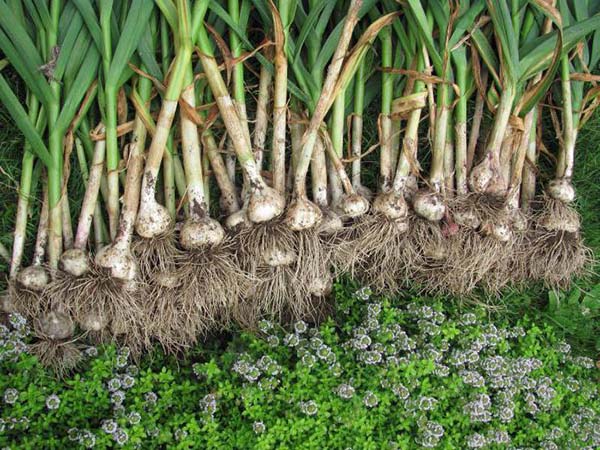
Content
Spring and winter garlic: differences
Novice summer residents may accidentally confuse winter garlic with spring garlic. To avoid this, you need to know the main differences:
- Spring garlic contains a greater number of small cloves (which are located as if in a spiral: the closer to the center, the smaller they are). Winter crops, on the other hand, consist of larger ones with a central core (hard arrow).
Spring garlic does not have an arrow in the middle, but winter garlic does have this arrow, this is how it is distinguished from spring.
- Winter garlic, as a rule, is shooting, spring varieties are non-shooting (with the exception of such variety as "Gulliver"),
- Spring garlic propagates only by cloves, winter garlic can also be propagated by bulbs.
Spring garlic does not give an arrow, and therefore, it does not have bulbs.
- The yield of winter garlic is much higher than that of spring garlic (more precisely, there are more heads).
- Spring is stored better and longer (it is he who is laid for winter storage). Winter varieties are stored worse and are generally suitable for canning.
- The taste qualities of spring garlic are more attractive (it is corny sweeter). It can be consumed fresh, excellently used in salads, when making soups.
- Winter garlic is planted in the fall before winter, in the spring it is planted with spring.
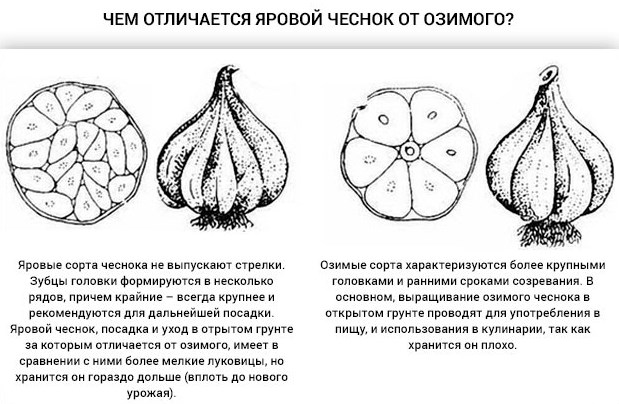
You can either plant winter garlic in spring
If for some reason you decided to plant winter garlic in spring, then plant it! You should be fine. The following videos prove this.
However, there is no special sense in this, winter garlic is for that winter, so that it plant in the fall before winter.
Video: is it possible to plant winter garlic in spring - planting and result
When and how to plant spring garlic outdoors in spring
In general, the agricultural technique of planting spring garlic in the spring is similar to autumn planting of winter crops, but has several nuances and differences.
Planting dates: depending on the climate of the region, according to the lunar calendar for 2021
The optimal time for planting garlic in spring directly depends on the climatic characteristics of the region.
The cloves can be planted early enough when the soil temperature will warm up to + 3-5 degreesin other words, after the snow melts and the ground thaws.
Advice! Can speed up the process of heating the soilif the chosen cover the bed with foil.
Approximate dates for planting garlic in spring in different regions:
- In the conditions of Central Russia (Moscow region) - this accounts for approximately for the second half-end of April.
- In the South - already in late March and early April.
- But in Siberia and the Urals, garlic is most often planted in early May. Approximately at this time, planting begins in the North-West (in the Leningrad region).
Remember! Garlic is not afraid of return frosts, so there is no point in postponing planting for the May holidays.
According to the lunar calendar for 2021
If you want to choose a specific date for planting garlic, then the Lunar calendar will always come to your aid.
So, the most favorable days for planting garlic, according to the lunar calendar for 2021, are:
- in March - 8, 10, 16-19;
- in April - 5-7, 9-15, 17-22, 27-30;
- in May - 2-6, 9, 11, 12, 20-22, 29-31;
- in June - 7-9, 11-14.
If we turn to the lunar calendar, then it is worth knowing that it is even more important not to plant a vegetable in unfavorable dates (days of the Full Moon and New moons, as well as the period when the Moon is in Aquarius, because it is a barren and dry sign -italicized), and this is in 2021:
- in March -9-10, 13, 28;
- in April -5-6, 12, 27;
- in May -2-4, 11, 26, 30-31;
- in June -10, 24, 26-27.
Preparing the beds and places
A garden for spring garlic should be prepared in advance, preferably in the fall.
As you know, garlic loves to grow in fertile land. Therefore, apply organic and mineral fertilizers for digging: humus or compost, phosphorus fertilizer — superphosphate or bone meal (organic analog), potassium - potassium sulfate or wood ash, and already in the spring nitrogen fertilizer — urea or ammonium nitrate.
If you are preparing a garden bed in spring (optimally - in a month or at least 1-2 weeks after planting), then you can simply apply a complex mineral fertilizer, for example, the same nitroammofosk.
And the earth must be loose!
As for the location of the garlic bed, you should choose sunny places. At the same time, moisture should not stagnate there. Therefore, it is optimal to plant cloves in high beds, in which case the risk of fungal diseases due to excessive moisture will be reduced to the very minimum.
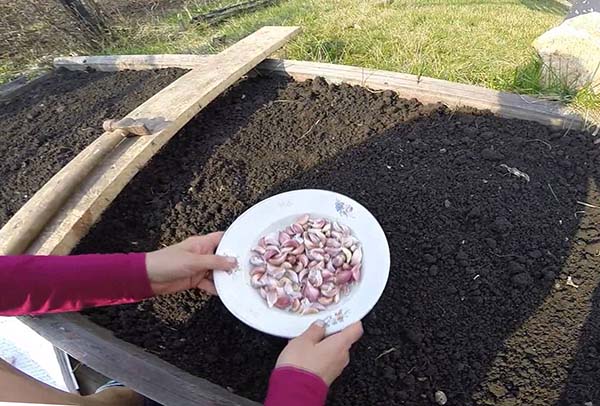
Concerning crop rotationthen good precursors for garlic are siderates (such as mustard or oats), legumes (peas), tomatoes, peppers, eggplants (nightshade), cucumbers, pumpkin and squash (pumpkin seeds), and strawberries (garden strawberries).
You should not plant it in the beds where the cultures of the onion family used to grow, in other words, onions of all varieties (family or shallots, leeks) and garlic itself.
By the way! The site has a separate article about then plant onions (for garlic, everything is the same).
Preparation of planting material
The measures for the preparation of garlic cloves for planting in open ground include the following: selection and calibration of planting material, dividing the heads into cloves, soaking them in order to disinfect and to stimulate growth.
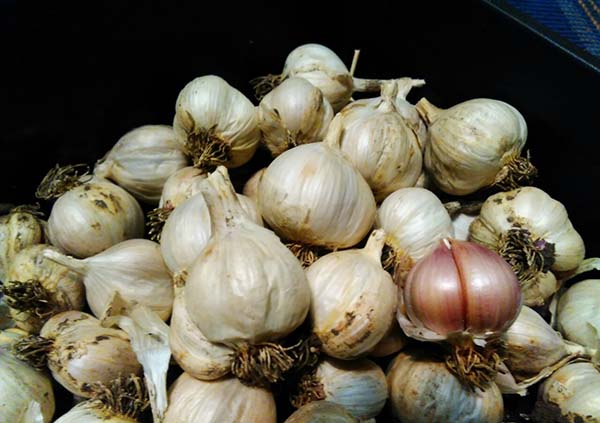
Carefully review all your planting material in advance. Discard all specimens showing signs of disease. However, you should not immediately separate the cloves from the heads; it is recommended to do this only the day before planting during the disinfection and / or soaking procedure in growth stimulants.
Important! If there are only a few cloves in the head, or they are fused (as if doubled), then most likely, by planting such cloves, you will hardly get a decent harvest, because these are typical signs of the degeneration of the variety.
Further processing of spring garlic before spring planting includes the following steps:
- Somewhere a day before planting, spring garlic should be taken out and allowed to lie down for a while at room temperature. Then divide the heads into teeth and again carefully examine them for diseases.
Advice! For planting, it is advisable to choose the outer teeth of the first row (they are the largest). The middle part, as a rule, is not used, since too small bulbs and cloves are obtained from it.
Although you can successfully use them (smaller teeth) for planting on greens (or just leave them for food). Therefore, be sure to separate such cloves and plant them on a separate bed.
Next, you need to conduct seed disinfection procedure.
- If the quality of the cloves leaves much to be desired, then it is advisable to soak them in warm water with the addition of a fungicide for dressing planting material, for example, "Maxim Dachnik" (according to the instructions).
- If the quality is good, then it is better to just hold them in a dark pink solution of potassium permanganate (for 20-30 minutes).
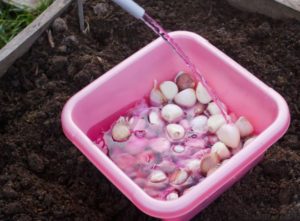
Also, a drug that has long proven its effectiveness and indispensability is suitable for disinfection Fitosporin-M.
- After the disinfection procedure, you can additionally soak the garlic heads in one of the growth stimulants (Epin, Zirkone, Rostock).
Direct planting of teeth (heads) into the ground
Highlights when planting garlic in spring (or some sort of step-by-step guide):
- Make ridges and shallow grooves (20-30 centimeters apart).
- Spill the wells liberally with water. Once the soil has absorbed moisture, you can start planting.
- The planting depth of spring garlic is slightly shallower than for winter garlic (3-5 cm). It should be about 2 to 3 centimeters (about 2 tooth heights).
Obviously, overly buried teeth will simply grow more slowly.
- You need to plant spring garlic closer than winter garlic (8-10 cm), that is, the distance between the cloves should be about 4-6 centimeters. This is due to the fact that the bulbs of such (summer) garlic grow much smaller.
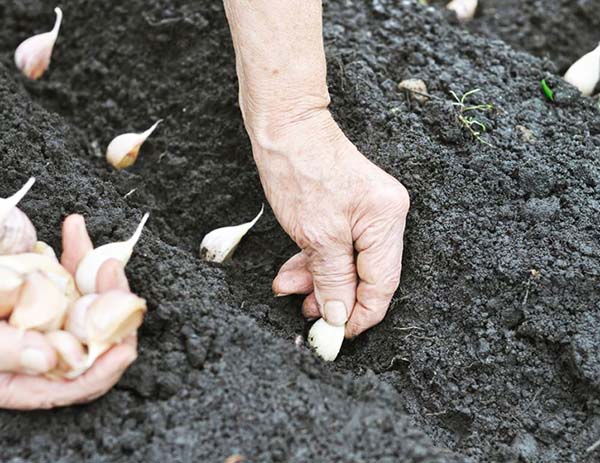
Spring garlic care after planting
Spring garlic is grown in much the same way as winter garlic, in other words, requires a minimum of maintenance. You only need to periodically loosen and weed the beds from weeds, water and, if necessary, feed.
Naturally, the bed should not overgrow, but always be clean, so it is worth carrying out regular loosening (so that after watering the bark does not form on the ground) and weeding from weeds.
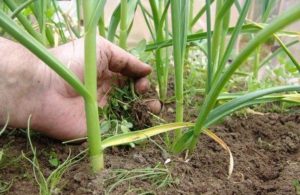
When shoots appear and the greens grow a little, the garden will need mulch (eg, sawdust). This will greatly simplify maintenance, in other words, reduce the number of watering, loosening and weeding.
Abundant and frequent watering spring garlic is required only at the beginning of its formation, so that it, so to speak, has good green foliage. In other words, in May-June, watering of garlic beds should be frequent. When the plant begins to form a head, this usually occurs during the formation of 5-6 leaves, watering should be reduced, and closer to August, and completely stop.

Important! If suddenly the leaves of the garlic will begin to turn yellow, then you should promptly take appropriate measures, and first familiarize yourself with the reasons described in this material.
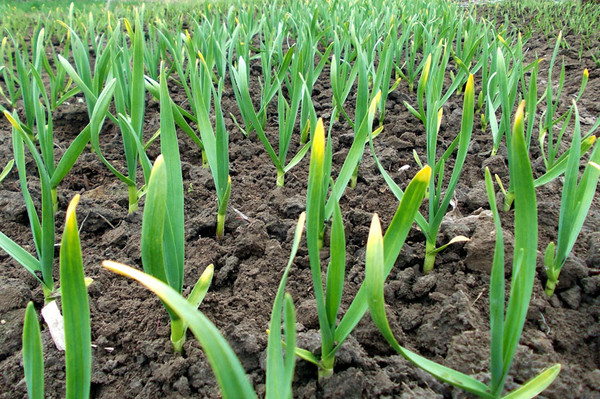
Spring garlic is a must feed in the initial period of its growing season (in June). For this, organics are best suited (infusion of mullein or bird droppings). You can also use nitrogen fertilizers, the same urea or ammonium nitrate.
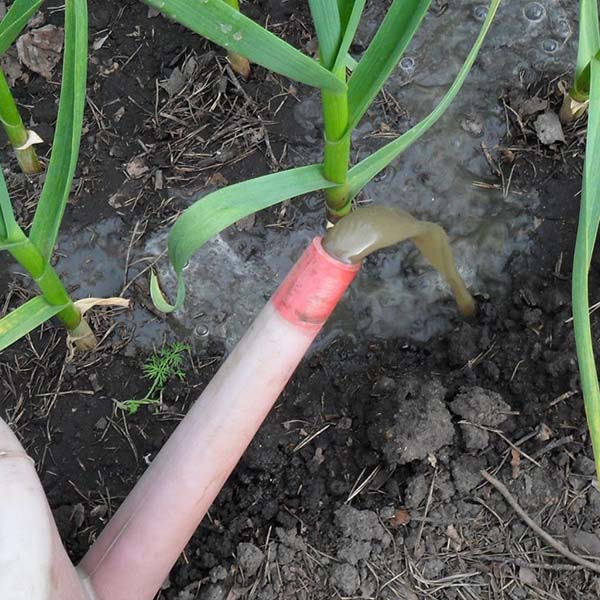
When the garlic begins to form a head (in July), then the top dressing should already be nitrogen-free, mainly potash, for example, you can use wood ash.
And 3-4 weeks before the expected date of harvesting, it is appropriate to water the garlic beds with a liquid solution of potassium monophosphate.
By the way! More details about dressing garlic during the season read in this article.
Harvesting for storage
As for the timing, in most cases, garlic harvesting begins from the second half of August to early September.
Outwardly, it is quite simple to determine that it is time to harvest spring garlic from the garden, according to the following signs of ripening: the leaves begin to lie on the ground, the tips turn yellow, and the lower leaves dry out a little.
By the way! More about when to harvest garlic from the garden, read in this article.
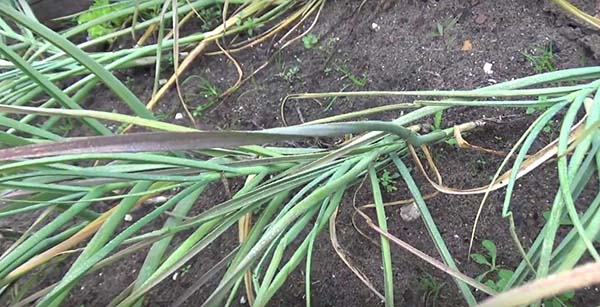
After harvesting, it is recommended to dry it a little and store it, for example, in boxes that can be placed at home, somewhere near a window.
Advice! Also on the site there is a detailed material about how to store garlic in winter.
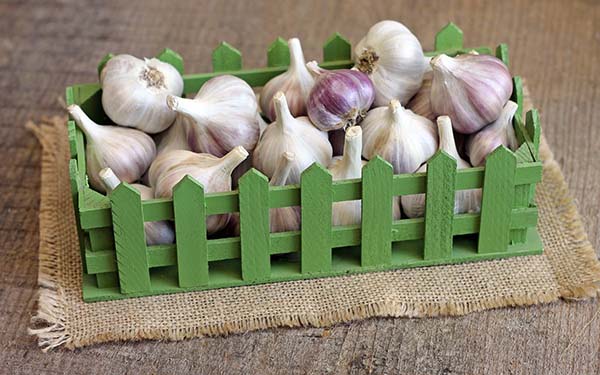
By the way! And after harvesting, even winter garlic, it will be possible to plant something else.
Say what you like, but spring garlic saves any housewife quite easily: when there is not enough taste and vitamins, it is undoubtedly suitable for all dishes, except for compote. Growing garlic is quite simple, you just need to take into account our tips and recommendations, and then your work will certainly be crowned with success.
Video: briefly about planting and growing spring garlic and its differences fromwinter crops

